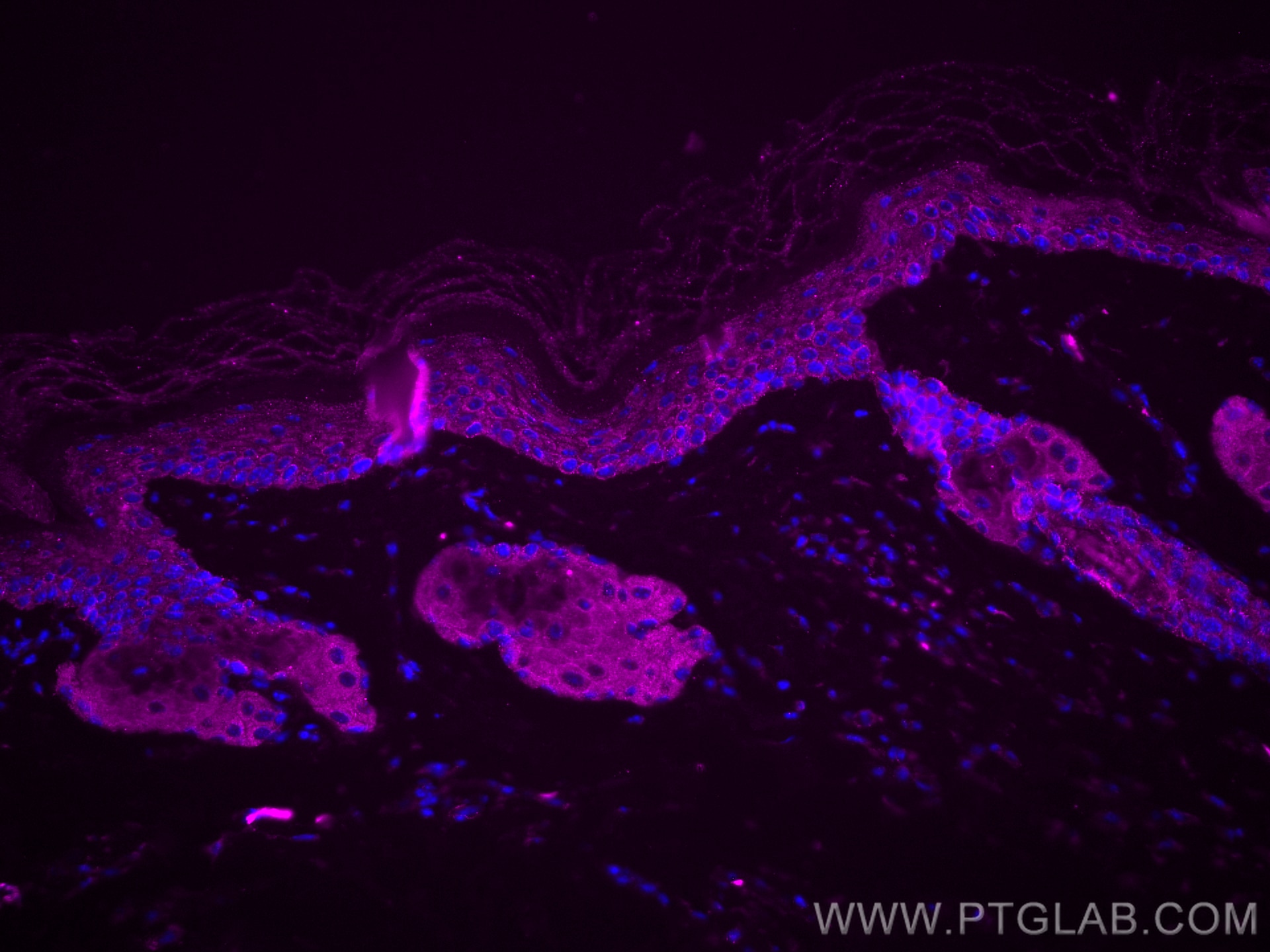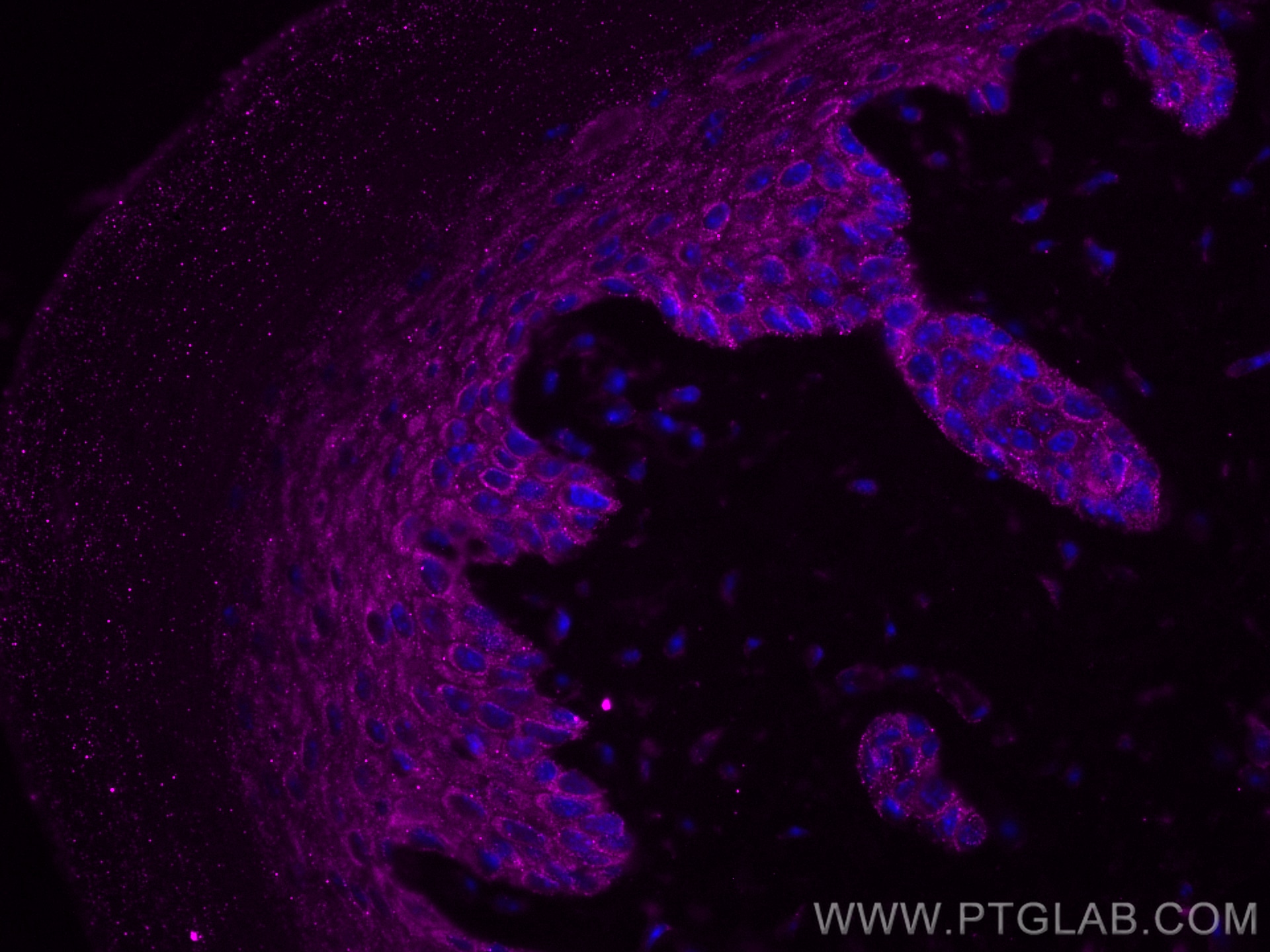TACSTD2/TROP2 Monoklonaler Antikörper
TACSTD2/TROP2 Monoklonal Antikörper für IF-P
Wirt / Isotyp
Maus / IgG2b
Getestete Reaktivität
human, Maus
Anwendung
IF-P
Konjugation
APC Fluorescent Dye
CloneNo.
5A6B1
Kat-Nr. : APC-68141
Synonyme
Geprüfte Anwendungen
| Erfolgreiche Detektion in IF-P | Maushautgewebe |
Empfohlene Verdünnung
| Anwendung | Verdünnung |
|---|---|
| Immunfluoreszenz (IF)-P | IF-P : 1:50-1:500 |
| It is recommended that this reagent should be titrated in each testing system to obtain optimal results. | |
| Sample-dependent, check data in validation data gallery | |
Produktinformation
APC-68141 bindet in IF-P TACSTD2/TROP2 und zeigt Reaktivität mit human, Maus
| Getestete Reaktivität | human, Maus |
| Wirt / Isotyp | Maus / IgG2b |
| Klonalität | Monoklonal |
| Typ | Antikörper |
| Immunogen | TACSTD2/TROP2 fusion protein Ag25775 |
| Vollständiger Name | tumor-associated calcium signal transducer 2 |
| Berechnetes Molekulargewicht | 36 kDa |
| Beobachtetes Molekulargewicht | 40-50 kDa |
| GenBank-Zugangsnummer | BC009409 |
| Gene symbol | TROP2 |
| Gene ID (NCBI) | 4070 |
| Konjugation | APC Fluorescent Dye |
| Excitation/Emission maxima wavelengths | 650 nm / 660 nm |
| Form | Liquid |
| Reinigungsmethode | Protein-A-Reinigung |
| Lagerungspuffer | PBS with 0.09% sodium azide and 0.5% BSA |
| Lagerungsbedingungen | Store at 2-8°C. Avoid exposure to light. Stable for one year after shipment. 20ul Größen enthalten 0,1% BSA. |
Hintergrundinformationen
Trophoblast cell surface antigen 2 (TROP2), also named as TACSTD2, is a transmembrane glycoprotein. TROP2 plays a role in transducing intracellular calcium signals. It is expressed in trophoblast cells, cornea and multi-stratified epithelia. TROP2 is overexpressed in most carcinomas and is involved in cancer proliferation, migration, invasion, and metastasis. Congenital mutations of TROP2 cause a rare autosomal recessive disease which may lead to blindness-the gelatinous drop-like corneal disease (PMID: 35688908).
Protokolle
| PRODUKTSPEZIFISCHE PROTOKOLLE | |
|---|---|
| IF protocol for APC TACSTD2/TROP2 antibody APC-68141 | Protokoll herunterladen |
| STANDARD-PROTOKOLLE | |
|---|---|
| Klicken Sie hier, um unsere Standardprotokolle anzuzeigen |



